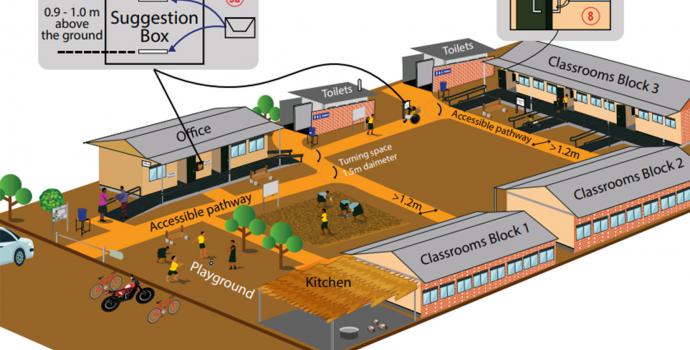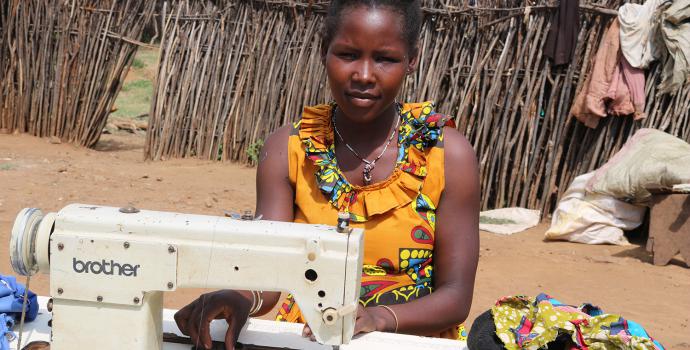Nearly 1 million child marriages in Uganda could be prevented if girls get secondary education

Nearly one million child marriages could be prevented by 2030 if all girls in Uganda finished secondary school, new analysis by Save the Children reveals on International Day of the Girl[i].
A new global briefing paper, Working Together to End Child Marriage, outlines the critical role that education plays in reducing child marriage. The briefing shows that 50 million child marriages worldwide could be prevented by investing in girls’ education.
The relationship between child marriage and education is two-fold. Child marriage is one of the leading reasons for school drop-out, however girls who are out of school are also exposed to increased risk factors for child marriage. For instance, for many girls living in insecure environments, parents often feel that marrying them off protects the girls from harm or the stigma associated with having a relationship or falling pregnant outside of marriage.
The briefing highlights the impact that universal education could have, as well as the huge amount of progress still needed to end child marriage and ensure all girls are able to complete secondary education.
Although an estimated 25 million child marriages have been prevented over the past decade around the world, no developing country[ii] – including Uganda – is currently on track to meet the UN goal of wiping out the practice by 2030[iii].
The report warns that if current trends are not nipped in the bud, about 134 million girls around the world will have been married by 2030, with almost 10 million girls married in 2030 alone, and about two million of those marriages involving girls under 15 years of age[iv].
In Uganda, 25% of adolescent girls and young women aged 15-19 are pregnant or already mothers, and at least one in 10 girls are married before they are 15[v]. Rates are particularly high in many of the poorest areas of the country, in Northern Uganda and Karamoja.
While education alone cannot end child marriage, it is a critical building block in ending the abusive practice.
Brechtje van Lith, Save the Children’s Country Director in Uganda, said:
“A toxic combination of poverty, lack of education and gender discrimination means many families come to the conclusion their daughters are better off becoming wives and mothers than with getting an education.”
“When a girl gets married it doesn’t just violate her rights once—the consequences last a lifetime. She is more likely to suffer abuse, more likely to become a mother before she is emotionally or physically ready, and her children are more likely to die before their fifth birthday. Giving birth early puts both mother and child’s life in danger.
“We’ve seen that a combination of education and girls’ empowerment programmes have been the most successful way to bring down child marriage rates. Progress is being made but not fast enough. On International Day of the Girl we urge our government to prioritise tackling child marriage, one of the major barriers to the empowerment and education of so many girls.”
Previous research by Save the Children and the World Bank has shown that while legal and policy reform is also important in ending child marriage and keeping girls in school, so is enforcing these laws and changing attitudes at the community level.
Save the Children is calling on the government of Uganda and governments worldwide to step up efforts to implement action plans that include full access to health and protection for girls. These plans must be fairly financed and must incorporate a strong focus on education.
Notes
[i] We analysed data from Demographic Health Surveys (DHS) and Multiple Indicator Cluster Surveys (MICS) for 67 countries, including Uganda, to determine the likelihood of a girl being married and in school at the same time. This analysis is illustrative and embodies a number of assumptions and limitations. For example, the calculation is based on the impact of education on child marriage and does not the impact of child marriage on education. In Uganda irt was found that 914,000 child marriages could be prevented.
[ii] UNICEF (2018) See: https://www.unicef.org/press-releases/25-million-child-marriages-prevent...
[iii] This would include all segments of society for which trend data is available. Analysis is based on the United Nations Sustainable Development Goals Leave no one Behind pledge to meet the target for all groups, which in this analysis includes the poorest 20%, and girls in rural areas. Calculations are based on available data from a subset of 68 low- and middle-income countries that have disaggregated data on child marriage.
[iv] Save the Children calculation
[v] Uganda Demographic and Health Survey 2016




